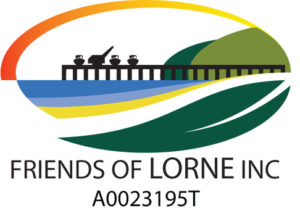The Committee for Lorne (CfL) has led the field with Accommodating Lorne’s Future, a report canvassing a range of different options. As well, you’ll see that they consider retirees, wanting to downsize.
The community conversation began with our first online Community Meeting/webinar on 5 June 2023. This is described below.
You can read Penny Hawe’s (Friends of Lorne) outline of the meeting purpose.
Penny Hawe remarks
And Cr Gary Allen’s outline of the work so far and what we want achieve
Cr Gary Allen’s remarks
Leon Walker, for the Lorne Business and Tourism Association outlined recently tried solutions for accommodating seasonal workers which are working well (e.g., using the caravan parks at discount rates) but the main long-term issue is making Lorne affordable for the year-round workers and young families.
Leon Walker’s remarks
Cr Libby Stapleton outlined the progress of Aireys Inlet Affordable Housing project. They have a site and are now selecting a developer and launching a design process –
Lorne Housing Solutions Cr Stapleton slide show
Assoc Professor Louise Crabtree-Hayes (Western Sydney University) explained Community Lands Trusts (CLTs) to us. The CfL report recommended that Lorne establish one of these.
Assoc Professor Louise Crabtree-Hayes slide show
A key message that came through is that the state and local government funding made available for affordable housing (like at Aireys) comes with conditions associated with it. It must target people with a particular income level (more on this in the Your Questions Answered LINK BELOW). CLTs, on the other hand, can be designed to cater for a higher income bracket (for whom, nonetheless, homes are still unaffordable). We don’t need to force a choice between these solutions. What with the ideas Leon was listing, the Shire’s experience at Airey’s Inlet, and the possibilities outlined by Louise, we could choose multiple solutions.
Indeed, in his remarks at the end John Higgins from the Committee for Lorne suggested that we start to develop working groups to check out different options, in parallel. We could then report back and compare progress. After we have used the webinars/on-line meetings to educate ourselves about options and learn from other communities, we may need some face-to-face meetings to consider, deliberate and plan.
Based on the questions in the meeting, we have put together Your Questions Answered. They cover things like eligibility, using the hinterland, the number of people needing to be housed and so on.
One participant asked about (spare) land availability in and around Lorne. Options are being explored. But it was also pointed out that there are CLTs and ways of financing home purchase and/or rentals for key and essential workers that don’t require new building on new land. Existing houses already for sale could be made affordable for eligible workers.
Meantime – if you have further questions, or information to share, please use the box below. We’ll search out the answers and update Your Questions Answered LINK BELOW over time.
A big thank you to Alicia Hooper, the Housing Officer at the Surf Coast Shire Council who helped with the research for the speakers, the planning, and getting everything to work on the day. She will continue to work with us over coming months.
As we search out answers to additional questions, we will place them in Your Questions Answered
If you do not wish your comment or question to be published on this site please email us directly at: committee@friendsoflorne.org.au
Our second online community meeting was held on Wednesday 13 September 2023 at 4pm.
Peter Spring is at 4.27. Andrew Paul is at 21.30.
Peter Spring from the Committee for Lorne gave an update on the search for land parcels within the town boundaries held by Council and/or state government, the idea being that one parcel of land could be sold to raise funds that would be used to then create new builds on a second parcel of land. Glenn Nott from GORCAPA answered a question about seasonal worker accommodation saying that discounted camping spots will once again be made available this year. Andrew Paul from the South Moreton Bay Islands Community Lands Trust in Queensland then spoke to us about his experience in establishing Australia’s first Community Lands Trust to make homes perpetually affordable for eligible families. It took him 5 years to build the first house, but he now has the legal, financial and social infrastructure to scale up. His group is now seeking to purchase existing properties on the open market, to speed things up. Andrew is establishing a website with guidance for other communities to make their own journey shorter and easier than his. We will put a link to that when it becomes available.
Check out a summary of what we have learned so far and what lies ahead. https://friendsoflorne.org.au/wp-content/uploads/2023/10/Lorne-Independent-Oct-2023-p-5-Affordable-housing.pdf



We should of course consider a range of possible solutions.
One area that may need more investigation is how to induce property owners to return to the long term rental market some of the housing stock currently available only for short term high value rentals.
One such inducement is to lecy higher rates and taxes payable on properties in the short term market – eg, by the Shire levying a higher rate on residences that are only rented for short terms each year.
Such a scheme must exclude traditional accomodation providers. Anecdotally, I am aware that the Airbnb market in New York has been reduced by imposing substantial financial penalties on short term rentals of stand alone residences. As a result, many more 1 BR apartments are now in the long term rental market in that city.
I appreciate this proposal would be vehemently opposed by short term landlords, as it was in NYC. But it will not require the huge financial investment that acquisition or building homes held by a CLT will need.
Anecdotally ( again), I can identify at least one stand alone house that 5 years ago was rented to essential workers over summer; but is now available for high priced short term rentals only.
Thanks Karen. Great idea. It looks like Dan Andrews was listening! We’ll also be asking Council if some of the funds coming down from the state and federal packages can be reserved for supporting owners to adapt and convert existing short term accommodation into longer term rentals, if needed (kitchen upgrades, for example). Carrots and sticks, as they say!